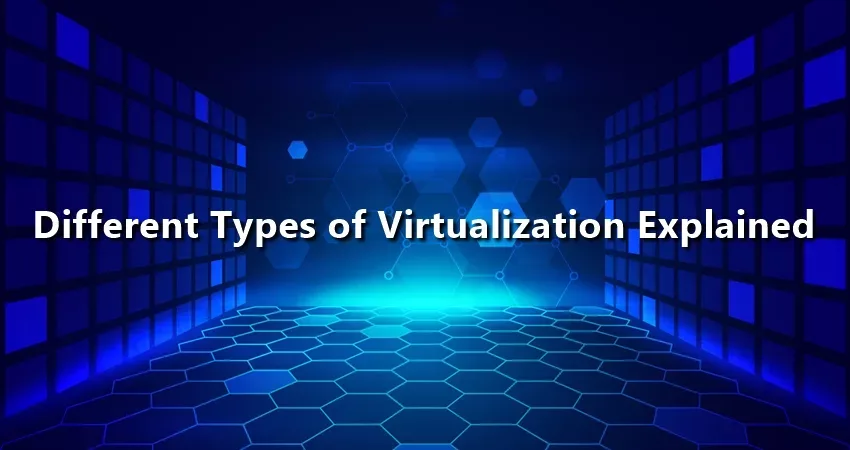Different Types of Virtualization Explained
Virtualization is a process of performing functionality simulation by creating a virtual computing environment for it within a single system. It allows you to use the physical resources at full capacity among various users.
More and more businesses are inclining towards virtualization as it offers operation flexibility. Its most common benefits include:
- Space optimization.
- Operating cost reduction.
- Datacenter management.
- Effectively minimizes downtime.
- Speeds up the provisioning process.
- Increased responsiveness and resource availability.
- Better disaster recovery and business continuity auditing.
What are the Different Types of Virtualization?
Here are the six main types of virtualization. Each of these affect different elements when in use.
Application virtualization hosts individual applications in which a virtual environment is entirely separate from the underlying operating system (OS).
Application virtualization makes it possible to encapsulate all the elements of any particular application and run them independently from the underlying OS.
It means that the machine that is running the application does not have that application installed. It resides on a (virtual machine) VM in a remotely located server.
Some of the top platforms that specialize in application virtualization software are:
- Citrix Virtual Apps and Desktops
- Microsoft App-V
- Parallels Remote Application Server (RAS)
Data virtualization is a data management approach. It retrieves, segregates, manipulates, and delivers data without any data specifications.
Any technical details of the data like its exact location and formatting information are not needed to access it. It allows the application to get a singular view of the overall data with real-time access.
Data virtualization software helps with data warehouse management and eliminates latency. It also provides users with on-demand integration, quick analysis, and real-time search and reports capabilities.
Three of the top data virtualization software are:
- Denodo
- JBoss Data Virtualization
- TIBCO Data Virtualization
The desktop Virtualization approach is also known as a client-server computing model. It stores any desktop environment virtually on a centralized remote server.
Desktop virtualization software helps with workstation load and offers; smooth employee onboarding, redundant process removal, disaster recovery, single interface customization, and more.
Top desktop virtualization software platforms include:
- Amazon WorkSpaces
- Citrix XenDesktop
- VMware Workstation and VMware Fusion
Continue reading: 5 Benefits of Desktop Virtualization
In network virtualization, all physical networking tools and other resources are integrated into one software-based resource. It further breaks the bandwidth into multiple channels, independent of one another.
A network virtualization software creates a tunnel through the existing network. This way, the admins can run VMs without the need for individual network reconfiguration.
The bandwidth division thus allows users to assign the channels to multiple systems in real-time. Three of the best network virtualization tools include:
- 6WIND Virtual Accelerator
- Cisco Nexus Virtual Services Appliance
- JunosV App Engine
Server Virtualization, also known as hardware-based virtualization, divides a physical server into multiple virtual servers that run guest operating systems independently.
According to Market Research Future analysis, Server Virtualization market is expected to grow up to USD 9,907.87 Million by 2026.
Server virtualization software reduces the need for multiple physical servers and requires a lesser amount of hardware. Thus, it’s a highly effective cost reduction technology.
There are three primary types of server virtualization’ Full Virtualization, Para-virtualization, OS virtualization.
Continue Reading: Types of Server Virtualization
The top three server virtualization platforms include:
- IBM PowerVM
- Nutanix AOS
- Proxmox VE
Storage virtualization performs resource abstraction in a way that the multiple physical storage arrays are virtualized as a single storage pool with direct and independent access.
The storage virtualization software aggregates and manages storage in various storage arrays and serves it to applications whenever needed.
The centralized virtual storage increases flexibility and availability of resources needed. This data virtualization and centralization is easily manageable from a central console. It allows users to manage and access multiple arrays as a single storage unit.
Top storage virtualization platforms include:
- FalconStor Network Storage Server
- IBM Storage Virtualization
- QUADStor Systems
Also Read:
Understanding Intent Based Networking and Its Benefits for Businesses

